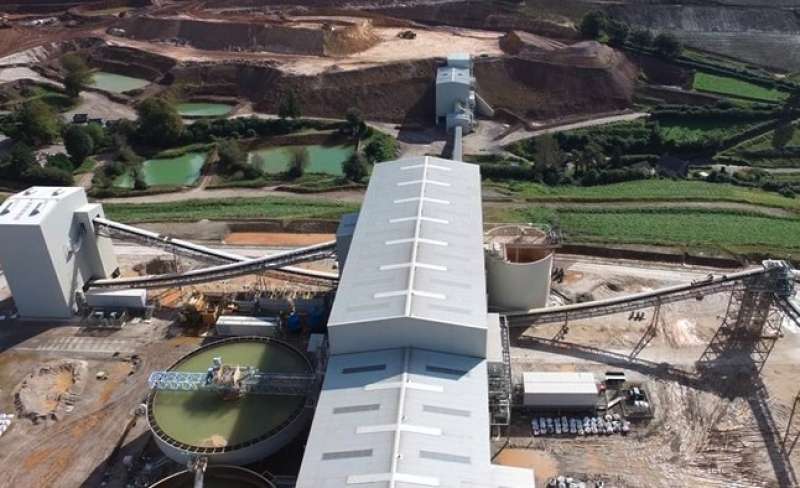Seven-day Workweek Greatly Improved Drakelands Tungsten Mine’S Production Capacity
- Details
- Category: Tungsten Information
- Published on Tuesday, 04 June 2019 00:07
It is in a period of rapid expansion and production increase in the tungsten mine project in Drakelands, Devon, UK. Up to now, the increase in production capacity and the rise in tungsten prices, have provided strong support for the stock price of developer Wolf Minerals.
Dr. Lucas, the company's chief technician, said: "This is a very encouraging start. After March 2018, with the improvement of the gravity beneficiation process system and the uninterrupted operation seven days a week, the supply chain was re-established. Although in March, there has been some snowfall in the UK, it seems that there is not much impact on the Drakelands project. After extreme weather delays and restrictions on ore crushing equipment, the optimization activities will start again and the company will focus on tungsten recycling. To improve operating cash flow."

The implement of seven-day workweek and recovery of tungsten-tin tailings have greatly improved production capacity, which is 25% higher than in January and February. In addition, the miners have improved the ore crushing process, and material upgrades in the crushing section will be tested over an extended period of time to prepare for the next harder granite ore feed.
At present, tungsten prices continue to be strong in 2017, with standard tungsten concentrates rising to $325/t in Europe and China, and then reaching a balanced market. In its interim report released on Wednesday, increased operating hours provide a better understanding of the processing performance of the processing plant and the mix of ore raw materials. Last year, the plant processed 959,958 tons of ore during the period under review and produced nearly 2,000 tons of tungsten concentrate. Production increased by 36% year-on-year, and sales increased by 37% year-on-year.
In 2018, the Dockland tungsten mine was mined in the first quarter with a total of 506,583 M3 of ore, with an average grade of 0.2% tungsten trioxide and 0.04% tin. The mine has entered a depth of 50 meters and is expected to complete the transition to a continuous hard granite ore feed in the second half of this year. After the end of the second quarter, the company began an orebody drilling program to provide next-stage control data and an opportunity to strengthen the classification of mineral resources.
The plan consists of four deep 500-meter deep holes, which are ultimately underneath the deep pit design to expand the understanding of the opportunities for further deepening of the ore and to determine the degree of mineralization at the intersection of the surrounding mineral layers within the current pothole.
Lucas said: "The success of the company's financing arrangements provides additional flexibility for our business needs, financing is in place to support Wolff's long-term self-sustaining cash flow. At the same time, a range of ore quality and mineral waste The pretreatment test begins to determine potential improvements in processing efficiency and project cash flow. Preliminary results of processing low quality ore raw materials have successfully exited the laboratory and entered the field testing phase, which will continue in the second half of the year and is likely to improve The extraction efficiency of additional metal minerals.
- Tungsten Manufacturer & Supplier, Chinatungsten Online: www.chinatungsten.com
- Tungsten News & Prices of China Tungsten Industry Association: www.ctia.com.cn
- Molybdenum News & Price: news.molybdenum.com.cn
- Tel.: 86 592 5129696; Fax: 86 592 5129797; Email: sales@chinatungsten.com



 sales@chinatungsten.com
sales@chinatungsten.com